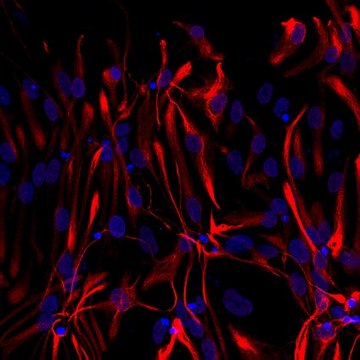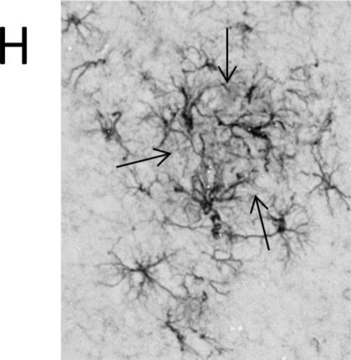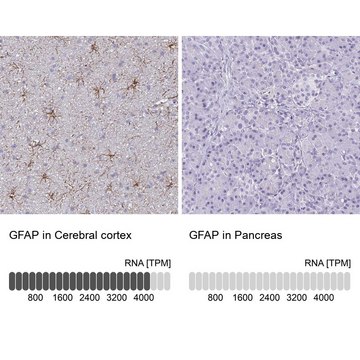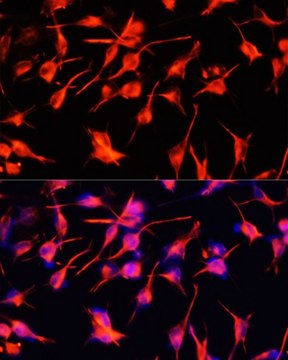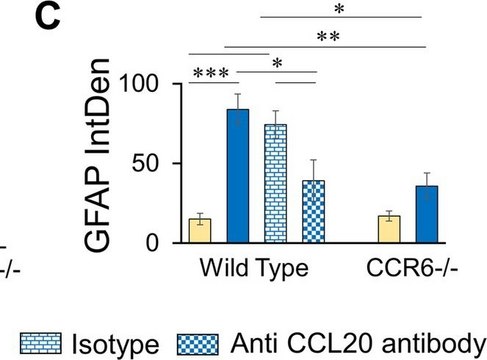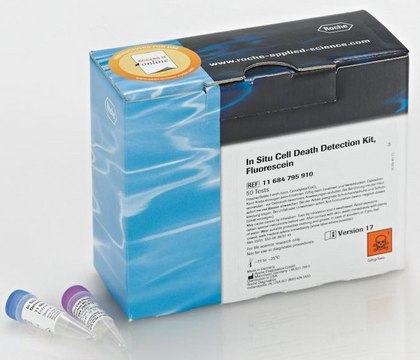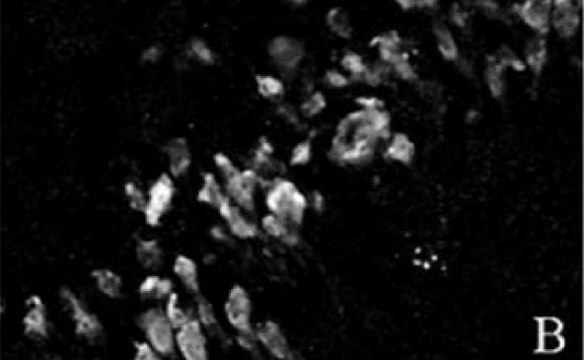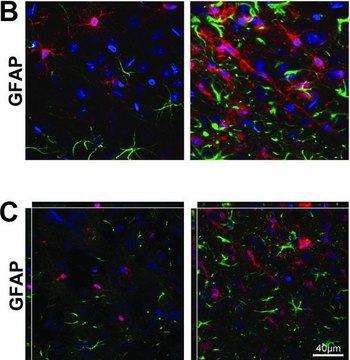NE1015
Anti-Glial Fibrillary Acidic Protein Cocktail Mouse mAb (SMI-22)
liquid, clone SMI-22, Calbiochem®
Sign Into View Organizational & Contract Pricing
All Photos(1)
Synonym(s):
Anti-GFAP Cocktail
UNSPSC Code:
12352203
NACRES:
NA.43
Recommended Products
biological source
mouse
Quality Level
antibody form
ascites fluid
antibody product type
primary antibodies
clone
SMI-22, monoclonal
form
liquid
contains
≤0.1% sodium azide as preservative
species reactivity
human, bovine, mouse, guinea pig, porcine, sheep, canine, rat, chicken
manufacturer/tradename
Calbiochem®
storage condition
OK to freeze
avoid repeated freeze/thaw cycles
isotype
IgG2b
shipped in
wet ice
storage temp.
−20°C
target post-translational modification
unmodified
Gene Information
human ... GFAP(2670)
General description
Mouse monoclonal antibody cocktail that contains a mixture of 3 antibodies supplied as undiluted ascites. Recognizes the ~50 kDa glial fibrillary acidic protein.
Recognizes ~50 kDa glial fibrillary acidic protein (GFAP) in human and bovine cytoskeletal preparations.
This Anti-Glial Fibrillary Acidic Protein Cocktail Mouse mAb is validated for use in ELISA, Frozen Sections, WB, ICC, Paraffin Sections for the detection of Glial Fibrillary Acidic Protein.
Immunogen
Bovine
purified bovine GFAP protein
Application


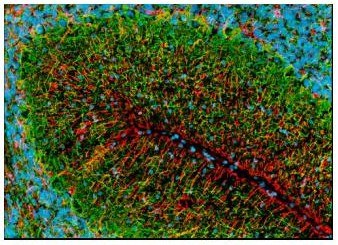
ELISA (1:1000)
Frozen Sections (1:1000, see comments)
Immunoblotting (1:1000)
Immunocytochemistry (1:1000, see comments)
Paraffin Sections (1:1000, trypsin or heat pre-treatment required)
Warning
Toxicity: Standard Handling (A)
Physical form
Undiluted ascites.
Reconstitution
Upon initial thaw, aliquot and freeze (-20°C).
Analysis Note
Positive Control
Astrocytes or cytoskeletal preparations
Astrocytes or cytoskeletal preparations
Other Notes
This cocktail is derived from the Bigner-Eng clones MAb1B4, MAb2E1, and MAb4A11 and provides a means for more comprehensive detection of astrocytomas than each clone alone. Each component is specific for GFAP and stains astrocytes and astrocytic processes as well as Bergman glia. Recognizes both anaplastic and reactive astrocytes by immunocytochemical staining. Does not recognize metastatic tumors and brain tumors of non-astrocytic origin, including medulloblastomas, meningiomas, choroid plexus papillomas, and schwannomas. For staining paraffin sections it is recommended that de-paraffinized sections be treated with 0.1% trypsin in 50 mM Tris-HCl, pH 7.6 for 20-30 min at 37°C or boiled in Tris-buffered saline, pH 9.0 for 15 min to expose the epitope. For immunocytochemistry or staining frozen sections, post-fixation in cold methanol or methanol/hydrogen peroxide for 10 min is required for access to the astrocytes in the sample. Antibody should be titrated for optimal results in individual systems.
Vick, W.W., et al. 1987. Acta. Cytol.31, 816.
McLendon R.E., et al. 1986. J. Neuropathol. Exp. Neurol.45, 692.
Pegram, C.N., et al. 1985. Neurochem. Pathol.3, 119.
McLendon R.E., et al. 1986. J. Neuropathol. Exp. Neurol.45, 692.
Pegram, C.N., et al. 1985. Neurochem. Pathol.3, 119.
Legal Information
CALBIOCHEM is a registered trademark of Merck KGaA, Darmstadt, Germany
WGK
WGK 1
Certificates of Analysis (COA)
Search for Certificates of Analysis (COA) by entering the products Lot/Batch Number. Lot and Batch Numbers can be found on a product’s label following the words ‘Lot’ or ‘Batch’.
Already Own This Product?
Find documentation for the products that you have recently purchased in the Document Library.
Srinivasu Kallakuri et al.
PloS one, 13(2), e0193389-e0193389 (2018-03-01)
Blast exposure is an increasingly significant health hazard and can have a range of debilitating effects, including auditory dysfunction and traumatic brain injury. To assist in the development of effective treatments, a greater understanding of the mechanisms of blast-induced auditory
Natalie J Pinkowski et al.
Neurobiology of learning and memory, 175, 107315-107315 (2020-09-28)
Cognitive deficits following a mild traumatic brain injury (mTBI) are common and are associated with learning deficits in school-age children. Some of these deficits include problems with long-term memory, working memory, processing speeds, attention, mental fatigue, and executive function. Processing
Michael R Grovola et al.
Brain pathology (Zurich, Switzerland), 31(5), e12953-e12953 (2021-05-08)
Over 2.8 million people experience mild traumatic brain injury (TBI) in the United States each year, which may lead to long-term neurological dysfunction. The mechanical forces that are caused by TBI propagate through the brain to produce diffuse axonal injury
Srinivasu Kallakuri et al.
PloS one, 12(1), e0169239-e0169239 (2017-01-21)
With the rapid increase in the number of blast induced traumatic brain injuries and associated neuropsychological consequences in veterans returning from the operations in Iraq and Afghanistan, the need to better understand the neuropathological sequelae following exposure to an open
Michael R Grovola et al.
Biomedicines, 11(7) (2023-07-29)
Traumatic brain injury (TBI) is a major contributor to morbidity and mortality in the United States as several million people visit the emergency department every year due to TBI exposures. Unfortunately, there is still no consensus on the pathology underlying
Our team of scientists has experience in all areas of research including Life Science, Material Science, Chemical Synthesis, Chromatography, Analytical and many others.
Contact Technical Service